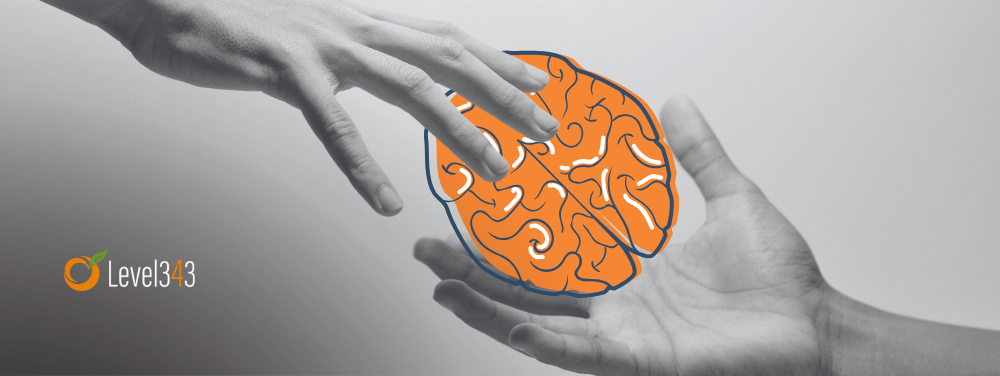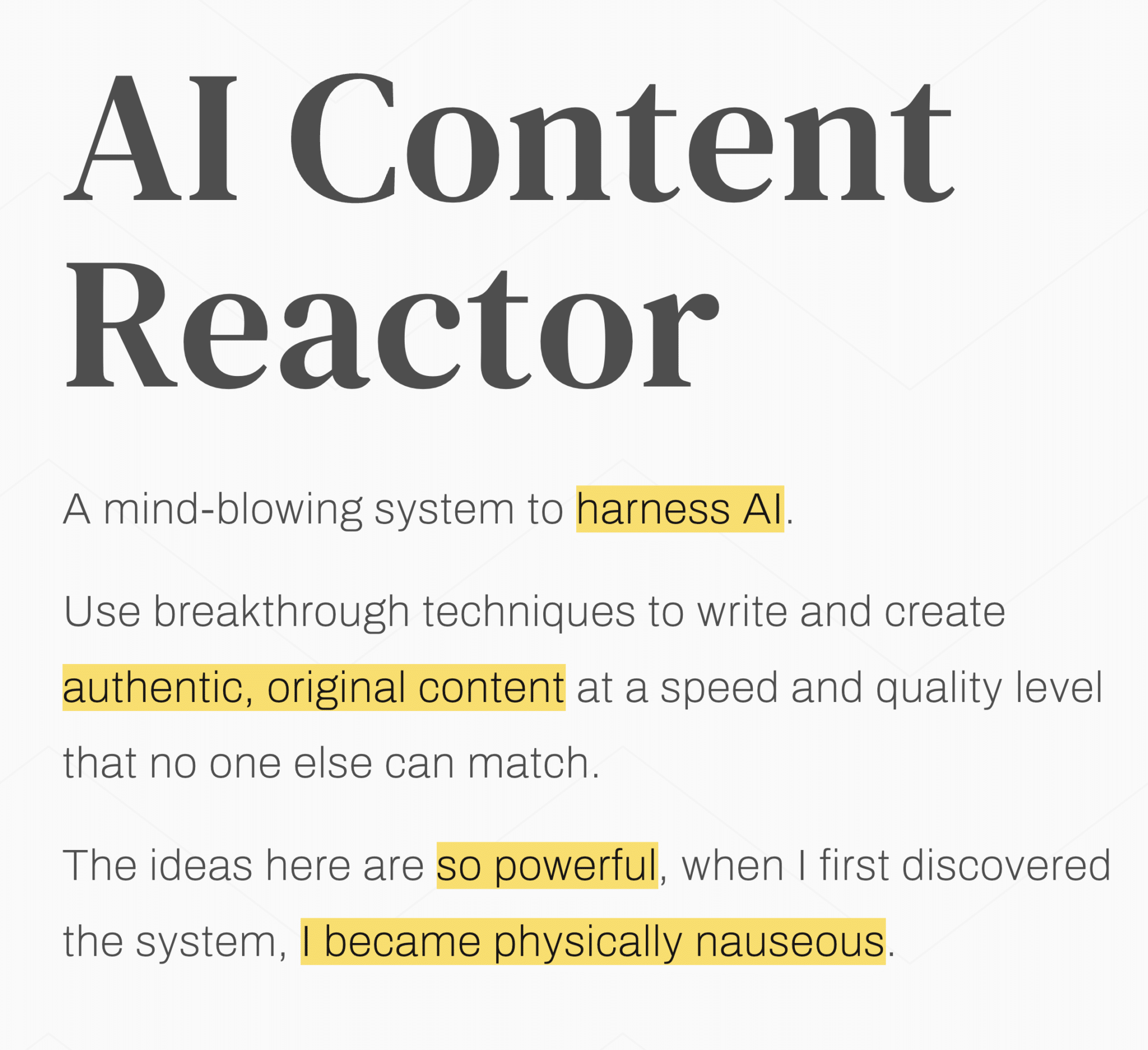Reciprocity is a powerful psychological principle. One of the most powerful in marketing, in fact, and rooted deeply in human behavior and neuroscience. It’s not a complex principle, either. In short, it’s the simple, yet profound idea that when someone does something for us, we naturally feel compelled to return the favor. The principle of reciprocity in digital marketing can turn casual website visitors into loyal customers, driving both engagement and revenue.
Table of contents
- The Psychology and Neuroscience Behind Reciprocity
- Translating Reciprocity into Digital Signals
- Exclusive Access
- Emotional Triggers and Digital Reciprocity
- Step-by-Step Strategy for Implementing Reciprocity in Marketing Campaigns
- Practical AI-Driven Example: Personalized Gifting for Customer Loyalty
- The Future of Reciprocity in Marketing
- Final Thoughts
When businesses provide high-quality products and services, they lay the foundation for positive experiences that customers value. These positive interactions are critical at every stage of the buyer journey, from discovery to repeat purchases.
Satisfied customers are more likely to return, as well as become vocal advocates for the brand. They drive word-of-mouth referrals and strengthen the company’s reputation. This cycle of giving and receiving is the essence of reciprocity, creating a powerful feedback loop. A loop that keeps customers engaged and invested in the brand.
Incorporating this principle into a digital marketing strategy means understanding how customers interact with your brand and finding opportunities to surprise and delight them. Whether through personalized offers, exclusive access, or thoughtful follow-ups, you can cultivate lasting relationships that turn first-time buyers into loyal, repeat customers.
How? By creating a carefully crafted table of contents for your content marketing and pairing that content with high-value lead magnets and personalized touchpoints. This ensures every customer interaction reinforces this powerful psychological principle.
The Psychology and Neuroscience Behind Reciprocity
The concept of reciprocity is a cornerstone of human interaction, studied extensively by psychologist Robert Cialdini. Another reason I loved, and still love, his explanation.
It’s built on the idea that people inherently strive for balance in their social exchanges. Don’t we? When a company provides value upfront, like a free resource, personalized experience, or small act of kindness, it triggers this psychological instinct to reciprocate. We have a warm and fuzzy emotional connection.
Here comes the medical nitty gritty of how this is all connected. From a neuroscience perspective, this exchange activates the brain’s reward centers. Most specificially, the idea of “returns” activates the ventromedial prefrontal cortex (vmPFC) and the striatum.
In laymen’s terms, these are the brain’s reward, motivation, and decision-making areas. Acts of kindness and reciprocal exchanges also release oxytocin, often called the ‘bonding hormone,’ which strengthens emotional connections and builds trust. This neurochemical response creates a powerful emotional tie, reinforcing the likelihood of future engagement and loyalty.
Translating Reciprocity into Digital Signals
For marketers, the challenge is turning this powerful psychological response into trackable, actionable data. I can’t tell you how many times I’ve had clients or their team give us the deer-in-the-headlights reaction.
But I get it. I get how some of the simplest things become huge challenges because we’re not programmed to think like a psychologist. So I’ll do my best to break it into bite-sized pieces. Here’s how:
- Content Upgrades and Free Resources – Offering high-value, free content like eBooks, templates, or exclusive insights in exchange for an email address or social share. This will take time and a strategy in place.
- Personalized Offers and Discounts – Tailored promotions based on past interactions, creating a personalized sense of appreciation. You have the data, use it!
- Social Proof and Reviews – Leverage user-generated content, customer reviews, and authentic testimonials to build trust and reinforce reciprocity. If this feels outside your comfort zone, consider partnering with someone experienced in social proof strategies or investing in training for your team to make the most out of this powerful marketing tool.
Exclusive Access
I wanted to explore the idea of exclusivity a bit further, as it’s important to understand how it can be translated into actionable steps. Offering VIP access to products, events, or premium content is a powerful way to reward loyal customers.
Here are a few ideas to expand on this strategy:
Early Access and Exclusive Product Drops
- Early Access: Allow VIP customers to purchase new products or limited-edition items before they’re available to the general public.
- Exclusive Collections: Create limited-edition collections or special product bundles available only to VIP members.
- Personalized Shopping: Offer personal shopping experiences, including one-on-one consultations or virtual styling sessions.
Invitation-Only Events and Experiences
- Private Events: Host invite-only events like product launches, networking mixers, or brand parties.
- Behind-the-Scenes Access: Offer VIPs a backstage pass to meet the team, tour the production process, or preview upcoming releases.
- Special Webinars or Workshops: Provide access to expert-led sessions, behind-the-scenes tours, or deep-dive industry insights.
Exclusive Content and Digital Experiences
- Premium Content: Provide exclusive articles, videos, or podcasts not available to the general audience.
- Member-Only Communities: Create private forums or social media groups for VIPs to connect and engage.
- Personalized Content Streams: Use customer data to deliver highly relevant and exclusive content, tailored to each VIP’s interests.
Personalized Rewards and Recognition
- Loyalty Tiers: Implement a tiered loyalty program that rewards VIPs with increasing benefits as they spend more or engage more.
- Personalized Gifts: Pick your top 50, 100, 500, whichever works for your budget, and send curated gifts based on their purchase history or personal preferences.
- Milestone Celebrations: Recognize birthdays, anniversaries, or significant milestones with personalized rewards or surprises.
Enhanced Customer Support and Service
- Priority Support: Offer VIP members faster customer service or dedicated support lines.
- Personal Account Managers: Assign dedicated account managers or personal assistants to your most valuable customers.
- Exclusive Access to Beta Features: Give VIPs early access to new app features, services, or product designs.
Exclusive Discounts and Perks
- Special Pricing: Provide access to member-only pricing, exclusive discounts, or flash sales.
- Early Sales Notifications: Give VIPs early notice of upcoming sales or promotions.
- Loyalty Points Boost: Offer double or triple points on purchases for your most loyal customers.
Unlocking these exclusive benefits can turn loyal customers into passionate brand advocates, creating a lasting competitive edge.
Emotional Triggers and Digital Reciprocity
Emotions are the fuel of reciprocity. Digital tools like AI and machine learning now allow marketers to read, predict, and respond to these emotional triggers with precision. This includes:
- AI-Driven Personalization – Using machine learning to predict customer preferences and deliver tailored content.
- Sentiment Analysis – Tracking customer sentiment through social listening tools to identify when a customer feels positive or valued, making them more likely to reciprocate.
- Behavioral Data – Using heatmaps, session recordings, and engagement metrics to gauge emotional responses to digital interactions.
Step-by-Step Strategy for Implementing Reciprocity in Marketing Campaigns
To teach and demonstrate how reciprocity can be effectively used in a marketing campaign, follow this step-by-step approach:
- Define the Value Exchange – Clearly identify what you will offer to your audience (e.g., free trials, exclusive content, personalized discounts).
- Create High-Value Lead Magnets – Develop resources like eBooks, webinars, or personalized quizzes that provide real value to your audience.
- Personalize the Offer – Use customer data to make the offer more interesting to the group or individual you’re reaching out to, increasing its perceived value and emotional impact.
- Leverage Social Proof – Share testimonials, reviews, and case studies to reinforce the principle of reciprocity through social validation.
- Automate Follow-Ups – Use email sequences and retargeting ads to nurture leads who engage with your initial offer.
- Measure and Optimize – Track campaign performance with analytics, including metrics like click-through rates, conversion rates, and customer lifetime value.
- Refine Based on Feedback – Continuously improve your approach based on customer feedback and changing market dynamics.
Practical AI-Driven Example: Personalized Gifting for Customer Loyalty
Imagine a dental practice using AI to train for reciprocity in their marketing. Here’s a practical approach:
- Segment Your Audience – Use AI to segment patients based on their visit history, treatment types, and preferences.
- Personalized Gifting – Send personalized thank-you packages, like toothbrushes, floss, or dental kits, to patients who have recently completed major treatments or have been loyal for over a year.
- Automate the Process – Use automated email triggers to follow up with a personalized thank-you note and a small gift, enhancing the sense of gratitude and connection.
- Measure Impact – Use AI to track the impact of these gifts on customer retention, referral rates, and repeat visits.
- Scale and Optimize – Refine the strategy based on customer feedback and data insights, adjusting the gifts or messages for maximum impact.
The Future of Reciprocity in Marketing
As AI continues to evolve, the role of reciprocity in marketing will become even more significant. AI can analyze tons of customer data, identifying the perfect moments to trigger the reciprocity response. However, this comes with challenges, including balancing personalization with privacy and ethical considerations.
To stay ahead, marketers must:
- Prioritize transparency and ethical data use.
- Build trust through genuine, personalized interactions.
- Leverage AI to enhance, not replace, human connection.
Final Thoughts
Small businesses and large enterprises can harness the power of reciprocity to build brand loyalty and enhance customer relationships. By leveraging actionable insights from neuroscience, customer behavior, and digital marketing tools, businesses can create powerful, lasting connections.
Whether it’s through personalized gifting, data-driven marketing efforts, or exceptional customer service team support, the key is to consistently provide value at every stage of the customer journey. This includes using social media platforms for real-time engagement, refining product development based on customer feedback, and measuring the effectiveness of your efforts.
Reciprocity isn’t just a strategy. It’s a mindset that focuses on creating meaningful, mutually beneficial relationships. By investing in your customers and understanding their needs, you build a loyal community that goes beyond repeat purchases. They become enthusiastic brand advocates and a powerful source of organic word-of-mouth. What’s not to love about that strategy?
Let me close by adding that, understanding the neuroscience behind this powerful principle, businesses can foster deeper customer loyalty, turning first-time buyers into lifelong advocates.
For more insights on leveraging human behavior in marketing, you can read more about cutting-edge strategies and expert guidance in our article archives.



































